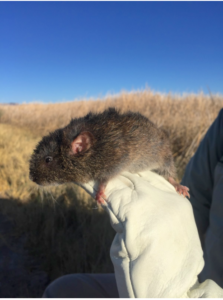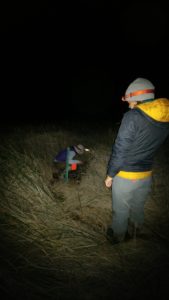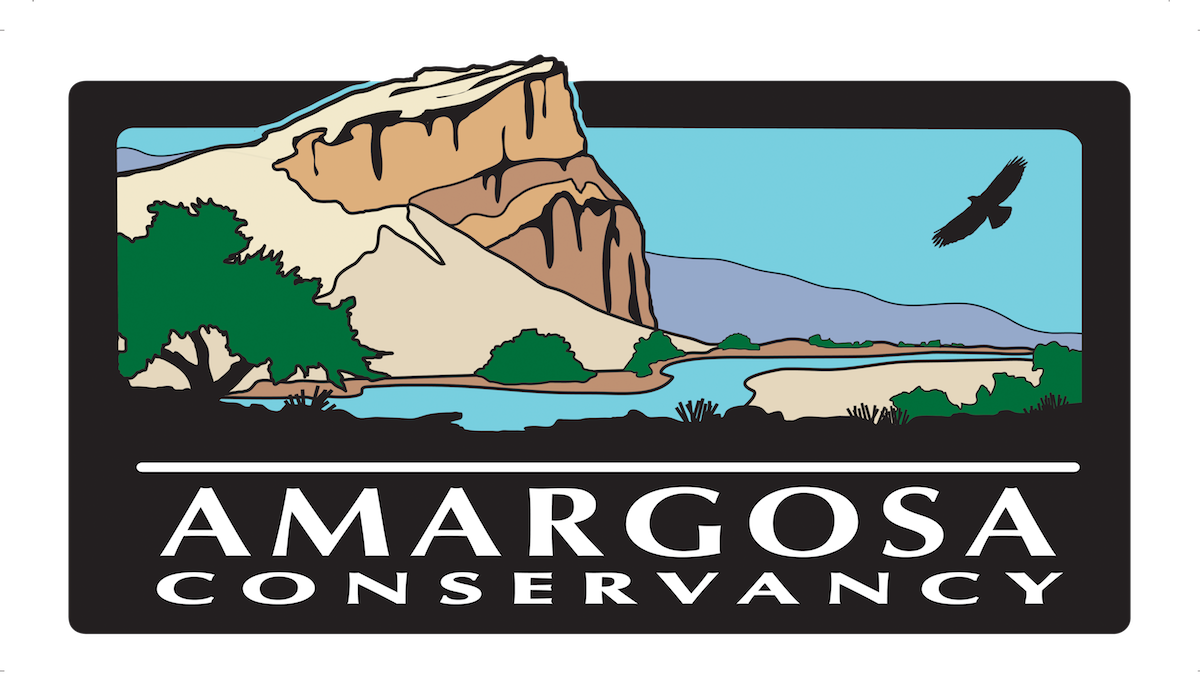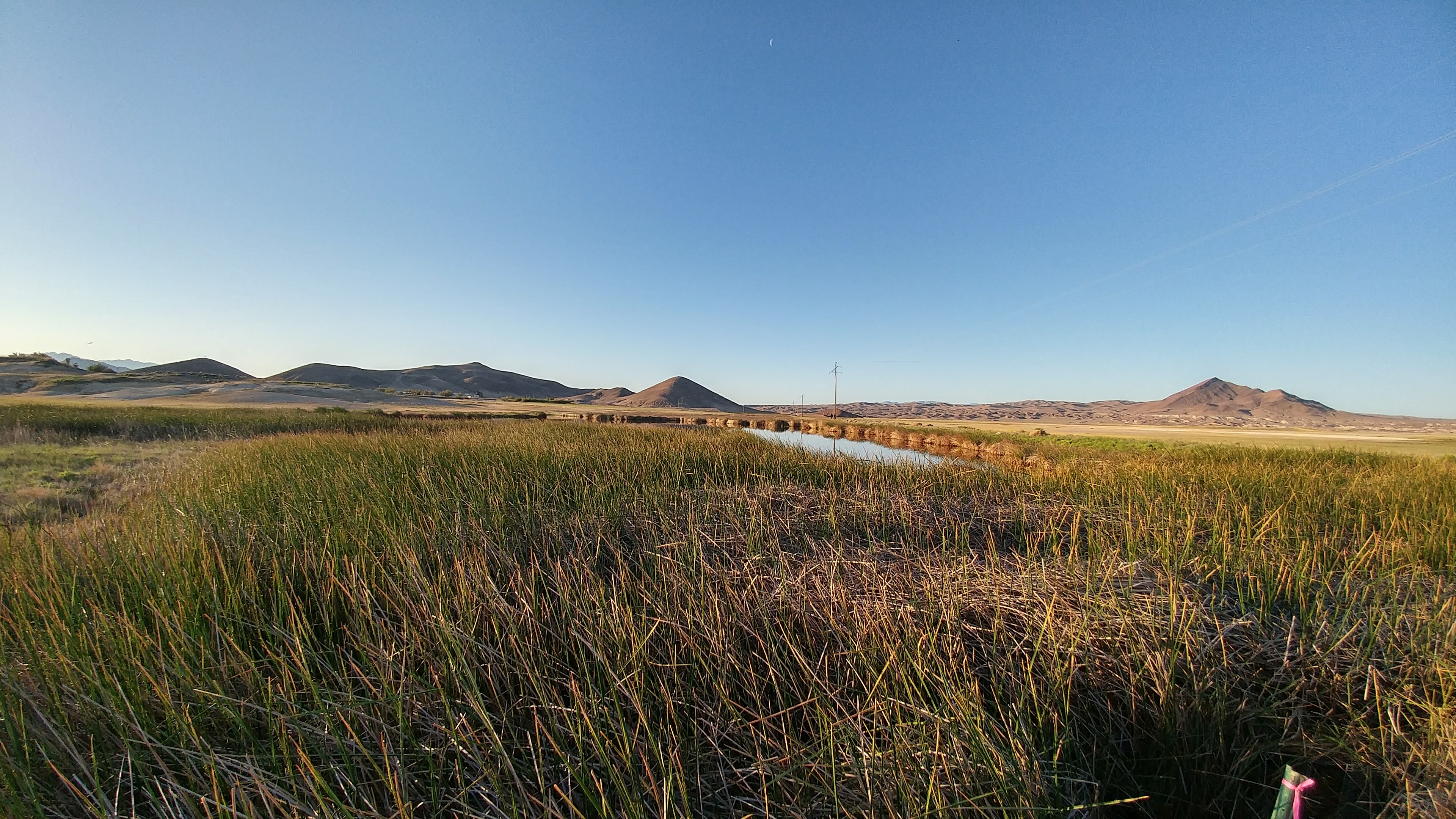 My internship with the Amargosa Conservancy here in Shoshone has made my path cross with the paths of some rather interesting and eccentric people. In the second to last week of my internship, I spent a night doing something that put me in that “eccentric” category myself – I spent the night in a marsh babysitting a colony of voles. I don’t particularly have a lot of experience with babysitting in general, but I feel like voles are probably easier to babysit than people. You never have to change a vole’s diaper, and as long as bulrush is already available, then you don’t have to spend time feeding them. They just kind of manage to entertain themselves, I guess. And, in my opinion, voles are cuter than babies. But on the other hand, when babysitting small children, you’re generally indoors and comfortable, and you generally don’t have to worry that they’ll be eaten by coyotes or owls. So there are pros and cons to babysitting both people and voles, I guess.
My internship with the Amargosa Conservancy here in Shoshone has made my path cross with the paths of some rather interesting and eccentric people. In the second to last week of my internship, I spent a night doing something that put me in that “eccentric” category myself – I spent the night in a marsh babysitting a colony of voles. I don’t particularly have a lot of experience with babysitting in general, but I feel like voles are probably easier to babysit than people. You never have to change a vole’s diaper, and as long as bulrush is already available, then you don’t have to spend time feeding them. They just kind of manage to entertain themselves, I guess. And, in my opinion, voles are cuter than babies. But on the other hand, when babysitting small children, you’re generally indoors and comfortable, and you generally don’t have to worry that they’ll be eaten by coyotes or owls. So there are pros and cons to babysitting both people and voles, I guess.
 The reason why we were babysitting voles was because the vole team from UC Davis came to Shoshone to release a colony of endangered Amargosa voles that were bred in captivity into the wild. Amargosa voles live only in the wetlands near Tecopa, and it’s estimated that there are only about 500 in the wild. Researchers are breeding them in captivity, and last Tuesday marked the second time that these voles have been released into the wild. The first time this was attempted, it apparently didn’t go so well. They weren’t able to eat the same food that wild voles eat, and they also attacked and killed each other. But, according to the vole researchers (Austin, Stephanie, Nora, and Janet), this vole release has gone much better than the previous attempt, which is very good news for this fragile population.
The reason why we were babysitting voles was because the vole team from UC Davis came to Shoshone to release a colony of endangered Amargosa voles that were bred in captivity into the wild. Amargosa voles live only in the wetlands near Tecopa, and it’s estimated that there are only about 500 in the wild. Researchers are breeding them in captivity, and last Tuesday marked the second time that these voles have been released into the wild. The first time this was attempted, it apparently didn’t go so well. They weren’t able to eat the same food that wild voles eat, and they also attacked and killed each other. But, according to the vole researchers (Austin, Stephanie, Nora, and Janet), this vole release has gone much better than the previous attempt, which is very good news for this fragile population.
Voles were released in two different locations. Our group split up, and Rhyan and I stayed with Austin and Nora, and Alison and Tanya stayed with Stephanie and Janet. Voles spent the night in cages near to where we set up camp. The cages were kept closed, so that the voles could get acclimated to their new environment, but so that predators could not snack on them. We checked on the cages periodically to make sure they weren’t being tampered with. When morning came, the cages were opened and the voles eventually dispersed throughout the marsh. A total of nine voles were released. We spent most of the night just sitting and talking about our jobs, and how cool it is that people get paid to be in charge of colonies of voles, and give them funny names like Vole-demort and John Tra-vole-ta. I eventually fell asleep and embarrassing photos were taken of me sleeping. The night was cold and the cot was uncomfortable to sleep on, but you definitely didn’t hear me complaining, because how often do people get the chance to camp in marshes and babysit endangered vole?? Almost never.
This is just one example of the wonderful opportunities that the internship has afforded me. At the time that I am writing this, I have less than an hour left in my last day of work here. Working at the Amargosa Conservancy has been a unique experience, and I’m glad for the memories and friendships I’ve made here. I am very much looking forward to continuing my career in the field of conservation. I hope that you’ve had as much fun reading about my adventures as I’ve had experiencing them!
Over and out,
Sam

